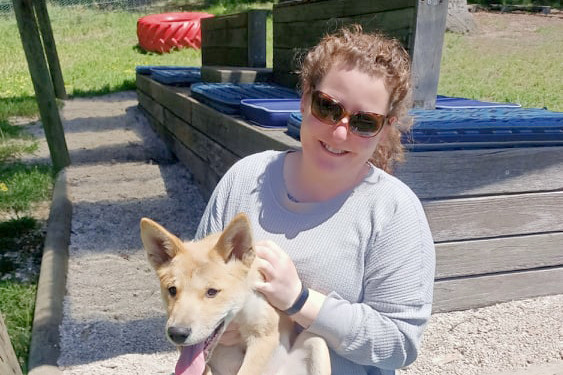General News
4 April, 2024
Researcher relieved at dingo protection
In a move that has pleased researchers but disappointed farmers, dingoes in North West Victoria remain protected despite the state government varying an existing order of protection across the rest of the state.

In a move that has pleased researchers but disappointed farmers, dingoes in North West Victoria remain protected despite the state government varying an existing order of protection across the rest of the state.
From March 14, to allow the control of dingoes where they threaten livestock, an amendment to the Wildlife Act has declared the animal unprotected within a 3km buffer zone on public land in eastern Victoria and on most private land across the sate.
However, dingoes in North West Victoria - including the Mallee and Wimmera - are safe due to the risk of extinction faced by the local population.
Where dingoes are a threat to livestock, farmers can apply for an Authority to Control Wildlife to allow them to use lethal control in circumstances where there is no other option.
The government has also pledged $550,000 to assist with non-lethal measures like exclusion fencing.
The announcement that local dingoes were safe came as a relief to Ellisha Martion, founder of Big Desert Dingo Research.
Ms Martion, from Rainbow, has been researching the dingo population locally for the past four years.
She is collaborating with Deakin University and has about 50 cameras set up within Big Desert/Wyperfeld for population and social structure research.
Ms Martion has also been working alongside the Department of Energy, Environment and Climate Action (DEECA), collecting samples for genetic population research as well as scats for dietary and genetic testing for another project.
"I started camera trapping about four years ago as I was really keen to know how many dingoes there were out here (Wyperfeld National Park/Big Desert), family group size, their home range etc," Ms Martion said.
"But my curiosity started back in 2018 when I came across two dingoes while running my dogs.
"I've had a few more encounters since then too, both before and during the current work I'm doing."
Ms Martion said over the past couple of years she had sent Dr Kylie Cairns numerous samples from the area for genetic testing.
All results showed the animal was pure dingo and had no domestic dog ancestry.
"The DNA test results were what really lit a fire in me to do more research as I was let in on some interesting things Kylie had found with the results for the area," Ms Martion said.
"I was told the dingoes from Big Desert Wyperfeld Ngarkat were pure but that they are also genetically distinct from other populations - similar to the dingoes of K'gari (Fraser Island).
"I was also told that the Big Desert population was also significantly inbred, presumably from being landlocked and culled for the past 200-plus years."
Ms Martion is assisting Deakin University to collect and inspect data for an estimate on population, along with looking at how far and often they travel.
The news that dingoes would continue to be protected locally was welcome, Ms Martion said.
"I couldn't believe it," she said.
"It was absolutely incredible to hear the government was finally listening to traditional owners and science, as wilkerr (dingo) is a totem species for the people of Wotjobaluk who have been tirelessly advocating for protection.
"It's also incredibly satisfying to know the local dingo population is now safe on both public and private land and hopefully this is a significant step forward towards dingo protection across not just Victoria but Australia."
Ms Cairns, from The University of NSW, has played a major role in having the ban implemented through her analysis and a paper released last year.
She said there were numerous options farmers could take to limit an attack by dingoes on livestock, including installing electric fences and changing animal husbandry practices, such as removing cattle from paddocks close to national parks.